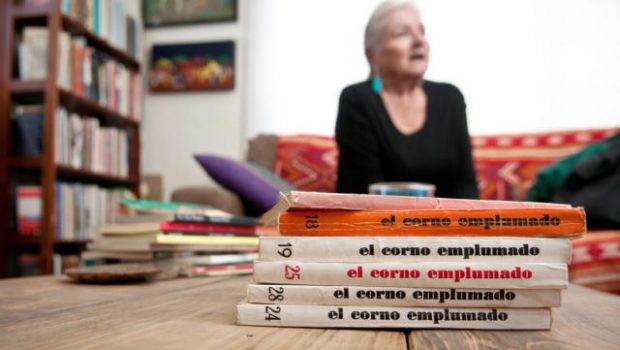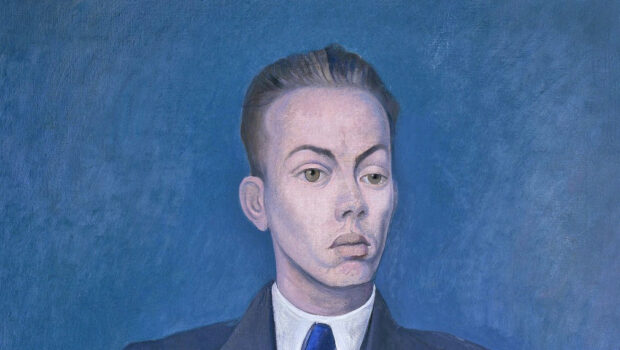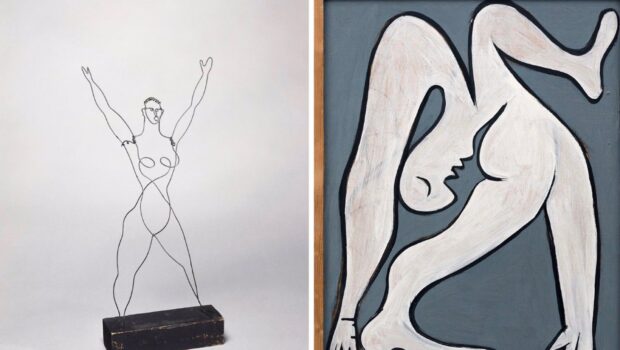“House of Geishas” Ana María Shua
Greg Walklin
|
Getting your Trinity Audio player ready...
|
House of Geishas by Ana María Shua. Translated by Steven J. Stewart
Perhaps the most famous microfiction of all time, a six-word story—often attributed, without evidence, to Hemingway—regularly pops up on social media: “For sale: baby shoes, never worn.” Such “flash fiction” in its various forms has continued to capture readers in an attention-deficit, novelty-seeking world.
The strength in the genre lies in the ability of “short short fiction” or “microfiction” to imply or suggest a much longer and deeper narrative—so to some degree, at least, the shorter the story, the richer the resulting meaning. The Spanish writer Juan Pedro Aparicio’s one-word story “Louis XIV” (“Yo”) may be the most economical, and extreme, example of how, even with only a single word, such work can imply a much larger narrative. It’s what is outside the story, then, such as its consequences or implications, that drives its impact. Another Spanish writer, Javier Marías, an employer of long narratives and sentences who intentionally used as many words as possible, said that literature “doesn’t properly illuminate things, but like the match it lets you see how much darkness there is.” Of course, every narrative leaves some things out; microfiction just leaves out more.
Ana María Shua may be one of the best living practitioners of this genre. Though the Argentinian has written novels, poetry, and children’s books, she is best known for her microfiction, often by described as the “queen” of the genre. Indeed, there is so much going on in the pages of House of Geishas, but somehow more going on off the page, which is a credit to the author’s ability. In the book, she demonstrates her complete mastery of the form, providing incisive and cutting tales that question, wound, bemuse, and befuddle.
None of the stories exceeds a single page; most are, in fact, a single paragraph, and there are several that contain only one or two short sentences. This means the translation, here provided by Steven J. Stewart, is roughly the equivalent of a high wire act. When a story contains few words, the importance of each rises, and a misstep can lead to the whole thing falling. Many words are chosen precisely because of their implications or secondary meanings, which makes the business of rendering the story into another language difficult. This is compounded by some metafictional tricks Shua uses here, such as—in “The Fervent Disciplines of Pythagoras”—intentional misspellings or—as in “Run!”—dropped letters. Fortunately, Stewart never loses his balance.
The book is split into two sections, House of Geishas, which includes linked microfiction all around the Japanese performers, and “Versions,” which contains a multitude of Shua’s other flash stories.
House of Geishas employs the form to great operatic effect; a rotating cast of characters, both clients and workers alike, makes for all kinds of literary opportunities. Shua’s stories include a geisha with a retractable sixth finger; a description of the daily fitness sessions the women attend; a client who is also a ghost; and numerous bizarre fetishes, fantasies, and escapades. The brevity of her stories fits so well with the setting that it’s easy to grasp the contradictory erotic world of the geisha without a sustained narrative.
While the microstory form generally cannot achieve the same kind of emotional impact as longer stories, it can make up for it with surprises, tricks, and other tropes. “Versions” sees Shua delight in subverting various fairy tales, classically myths, and twists around the stories of fantastic creatures. In a series of linked stories on Cinderella, her stepsisters surgically modify their feet to fit the shoes, and then subsequently rewrite the story, so they become the heroes (fables, and not just history, it seems, is written by the winners). In a series on the princess and the frog, the transformations don’t end once the frog becomes a prince. There are all kinds of other subversive and clever tales here, including rebelling golems and revolutionary dwarves. One wickedly fun story, involving a conception with a succubus, leads to a primogeniture dispute in Hell; it’s easy to imagine a novel from it, probably a cross between “Bleak House” and “Inferno.”
Other highlights include “The Theologian,” about the determination of angel’s sex by a conference of clergy; “Identity and Alteration,” which manages to create an entire world of sentient microorganisms in two sentences; “The Angel of Death,” which recounts a visit by Death with ulterior motives; and “Time Machine,” which establishes the possibility that Cervantes might have used time travel to steal from Borge’s Quixote enthusiast Pierre Menard (Borges himself, one guesses, would have delighted in this notion).
In “The Caliph’s Dream,” a leader has many dreams of battles, loses and diplomacy, but later claims the one imagining victory was prophetic:“(O)nly the dreams that come true deserve to become part of the story,” Shua writes. In this way, microfiction exemplifies something we all do—selecting the best small parts of our lives and writing our stories around them. Even the smallest bit, such as a single insult or exhilarative moment, can reoccur in our memories. Shua has seized these types of moments for her work. None of the stories here will take long to read, but your time will be worth it.
 Greg Walklin is an attorney and writer living in Lincoln, Nebraska. His book reviews have appeared in The Millions, Necessary Fiction, The Colorado Review, and the Lincoln Journal-Star, among other publications. He has also published several pieces of short fiction. His Twitter: @gwalklin
Greg Walklin is an attorney and writer living in Lincoln, Nebraska. His book reviews have appeared in The Millions, Necessary Fiction, The Colorado Review, and the Lincoln Journal-Star, among other publications. He has also published several pieces of short fiction. His Twitter: @gwalklin
©Literal Publishing. Queda prohibida la reproducción total o parcial de esta publicación. Toda forma de utilización no autorizada será perseguida con lo establecido en la ley federal del derecho de autor.
Las opiniones expresadas por nuestros colaboradores y columnistas son responsabilidad de sus autores y no reflejan necesariamente los puntos de vista de esta revista ni de sus editores, aunque sí refrendamos y respaldamos su derecho a expresarlas en toda su pluralidad. / Our contributors and columnists are solely responsible for the opinions expressed here, which do not necessarily reflect the point of view of this magazine or its editors. However, we do reaffirm and support their right to voice said opinions with full plurality.
Posted: January 8, 2024 at 9:13 pm










